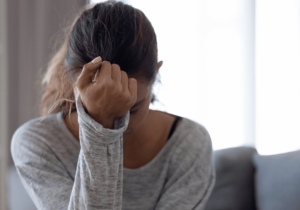 Within the lesbian, gay, bisexual, transgender, and queer (LGBTQ+) community, there are many challenges present that heterosexual people do not face. These challenges include social stigma, discrimination, harassment, and violence. These challenges cause intense emotional and physical distress which can lead to many different problems for an individual such as mental health issues or even addiction.
Within the lesbian, gay, bisexual, transgender, and queer (LGBTQ+) community, there are many challenges present that heterosexual people do not face. These challenges include social stigma, discrimination, harassment, and violence. These challenges cause intense emotional and physical distress which can lead to many different problems for an individual such as mental health issues or even addiction.
Among the LGBTQ+ community, it is estimated that around 20 to 30 percent of identifying members abuse substances. In the general population as a whole, around 9 percent of individuals engage in substance abuse. This indicates a concerning trend of higher use rates among LGBTQ+ individuals. One study even reported that transgender students are 2.5 times more likely to use meth or cocaine than their cisgender peers.
In order to properly address substance abuse for members of the LGBTQ+ community, addiction treatment must take into consideration the many underlying issues that are present in an individual’s life. LGBTQ+ substance use treatment should appropriately address issues that may include homophobia, transphobia, social isolation, familial problems, and violence. With this understanding, members of the LGBTQ+ community can obtain the necessary help and support to overcome addiction.
The Connection Between Discrimination and Substance Abuse
When we say that substance use rates are higher for members of the LGBTQ+ community, this does not mean that this is due to something inherent in these individuals. Instead, the higher rates of abuse are due to the discrimination and prejudice that they face on a daily basis. This can include things like:
- Verbal or physical abuse
- Social isolation
- Lack of family support
- Employment discrimination
- Lack of access to quality healthcare
All of these factors can lead to feelings of anxiety, depression, and low self-esteem. This, in turn, can lead to substance abuse as a way to cope with these negative emotions. In fact, substance abuse is often an attempt to self-medicate in response to external challenges and the thoughts and feelings caused by those challenges.
Unfortunately, substance abuse can create a whole new set of problems. For example, it can lead to financial instability, health problems, and relationship issues. It can also make it difficult to access quality healthcare and addiction treatment. This is why it’s so important for members of the LGBTQ+ community to seek out specialized treatment that takes into account the unique challenges they face.
Examining the Factors that Contribute Towards LGBTQ+ Substance Use
As previously mentioned, people who are a part of the LGBTQ community often face challenges that their straight counterparts do not. Discrimination, social stigma, risks of harassment and violence, and other challenges are realities that many members of the LGBTQ+ community face regularly.
These stressors can put community members at risk for not only a substance use disorder but also psychological disorders. Some psychological disorders and emotional issues that can result from stressors that the LGBTQ community faces are:
- Self-harm
- Panic attacks
- Suicidal ideation
- Major depression
- High levels of stress
- Generalized anxiety disorder
When a co-occurring disorder is present, there are times when the addiction forms as a result of self-medicating. However, no matter how the substance use disorder is formed, LGBTQ+ substance use treatment is essential. With treatment that focuses on addressing all the possible stressors in the individual’s life, balance and sustained sobriety can be achieved. Additionally, through LGBTQ+ substance abuse treatment, the following contributing factors will be addressed if they are present in an individual’s life:
Social Stigma and Discrimination
The prevalence of discriminatory attitudes and behaviors towards the LGBTQ+ community can create immense amounts of stress, which in turn can lead to substance abuse as a way of coping. In order to provide effective treatment, it is essential that this social stigma is addressed.
For some people who require LGBTQ+ substance use treatment, living their life “in the closet” is what is contributing to their need to cope. Hiding one’s true self can be incredibly stressful, and many people turn to drugs or alcohol as a way of numbing the pain. It is important that treatment providers create an environment where LGBTQ+ individuals feel comfortable being open about their sexuality or gender identity.
Unsafe Home Environment
Unfortunately, not all families are accepting of their LGBTQ+ member’s sexual orientation or gender. When someone makes the decision to share their sexual or gender identity with their loved ones, they are risking rejection, abandonment, and even violence.
In some cases, an unsafe home environment can lead to homelessness, increasing the risk of substance abuse. Many people believe that addiction causes homelessness, but the opposite is often true. Many people who have lost their housing turn to drugs and alcohol to deal with the stress and trauma of being homeless.
Internalized Homophobia, Biphobia, or Transphobia
It is no secret that exposure to anti-LGBT stigma can cause a person to adopt those beliefs. This can even cause people who are within the LGBTQ+ community to hold negative views about themselves. When this happens, it is referred to as internalized homophobia, biphobia, or transphobia.
When a person experiences internalized homophobia, biphobia, or transphobia, they may wish that they were straight or cisgender and identify with harmful ideas about themselves and their fellow community members. This can lead to substance use as a way to cope with feelings of self-hatred.
Co-occurring Mental Health Conditions
Psychiatric problems, such as anxiety and depression, are common among those who identify as LGBTQ+. In fact, the National Alliance on Mental Illness (NAMI) reports that LGBTQ+ adults are more than three times as likely as heterosexual adults to experience a mental health condition.
Anxiety and depression may lead to substance use as a way of coping with difficult emotions. When this happens, it is imperative that LGBTQ+ substance use treatment includes dual diagnosis treatment. That is a treatment that addresses both the substance use disorder and the underlying mental health condition.
The Need for LGBTQ+ Substance Use Treatment Centers
Understanding the intricacies of why substance use rates amongst members of the LGBTQ+ community are so high is an important part of formulating more effective methods of prevention and treatment. While there are many factors that contribute to the high rates of substance abuse in the LGBTQ+ community, some of the most significant include the discrimination and prejudice from family members, friends, co-workers, and strangers.
Unfortunately, the discrimination that LGBTQ+ individuals face does not end there. Once they develop a substance use disorder, they often find it difficult to get the treatment they need. This is because many treatment facilities are not equipped to deal with the unique needs of LGBTQ+ patients.
Fortunately, there are a growing number of treatment facilities that are specifically geared toward helping LGBTQ+ individuals recover from substance abuse. These facilities are often more understanding and accepting of their patients, which can create a more positive environment for recovery. Additionally, LGBTQ+ substance use treatment facilities often have staff members who are also part of the LGBTQ+ community, which can help patients feel more comfortable and understood.

Considering Substance Use Rates in the LGBTQ+ Community
While more research may produce different figures, current studies indicate that members of the LGBTQ+ community use drugs and alcohol at higher rates than the general population. For example, data collected by the National Epidemiological Survey on Alcohol and Related Conditions found that people who identified as lesbian or gay were more than twice as likely as people who identified as straight to have a severe alcohol or tobacco use disorder.
The National Survey on Drug Use and Health’s study on the Severity of Alcohol, Tobacco, and Drug Use Disorders Among Sexual Minority Individuals and Their “Not Sure” Counterparts found the following:
- 18.7 million people age 18 or older in the United States have a substance use disorder
- People who identify as bisexual are three times as likely to have a substance use disorder
- Those who are unsure about their sexual identity are up to five times more likely to have a substance use disorder
While society continues to move towards a place of acceptance in terms of representation in media, many people still have no escape from the fear of being rejected. Even worse, a broad societal shift does not guarantee that an individual’s particular community, family, or friend group will accept them.
LGBTQ+ Substance Use Treatment Options
There are many different types of clinical programs that address addiction. These programs usually include a mix of individual and group therapy, education, and 12-step meetings. The goal of these programs is to help the person learn how to live without drugs or alcohol. Further, most addiction treatment programs will also address any underlying mental health issues that may be contributing to the addiction. For LGBTQ+ individuals, this may include addressing issues such as anxiety, depression, or trauma.
Medical Detox
Before beginning treatment, it is important to first detox from the substances you are addicted to. This can be done in a medical setting, where you will be monitored by a team of doctors and nurses. Medical detox can help to mitigate withdrawal symptoms and make the detox process as safe and comfortable as possible.
Residential Treatment Programs
Residential or inpatient addiction treatment programs are a type of intensive addiction treatment in which you live at the facility for the duration of your treatment. These programs provide around-the-clock care and support, so you can focus on your recovery.
Partial Hospitalization Programs
Partial hospitalization programs (PHPs) are a type of intensive outpatient program in which you receive most of your addiction treatment during the day and return home at night. Many people choose to move through the levels of addiction care and attend a PHP after completing inpatient treatment. Generally, patients attend treatment for up to 5 days a week and for around 5 to 8 hours a day.
Intensive Outpatient Programs
Intensive outpatient programs (IOPs) provide many of the same addiction treatment services as inpatient and partial hospitalization programs, but you don’t live at the facility. IOPs typically meet 3-5 times per week for a few hours at a time.
Outpatient Programs
Traditional outpatient programs are the least intensive form of care. Outpatient programs usually meet 1-2 times per week for a few hours at a time.
Sober Living
After completing treatment, some people require a place to live that is free from triggers. Sober living homes provide a safe and structured environment that promotes recovery. Residents are typically required to follow certain rules, such as abstaining from drugs and alcohol, attending 12-step meetings, and participating in household chores.
One of the unique challenges that LGBTQ+ individuals face is finding a treatment program that is inclusive and understanding of their needs. It is important to find a treatment program that is welcoming and affirming of LGBTQ+ identities. If you are seeking addiction treatment and are part of the LGBTQ+ community, the following program types may be specialized to provide you with the care and support you need:
Substance Use Treatment with Casco Bay
 At Casco Bay Recovery, we offer a variety of substance use treatment services to meet the unique needs of our clients. We understand that every individual is different, and we tailor our approach to each person’s unique situation. We offer a range of services, including individual and group therapy, support groups, and family counseling.
At Casco Bay Recovery, we offer a variety of substance use treatment services to meet the unique needs of our clients. We understand that every individual is different, and we tailor our approach to each person’s unique situation. We offer a range of services, including individual and group therapy, support groups, and family counseling.
If you or someone you know is struggling with substance abuse, we can help. Contact us today to learn more about our substance use treatment services.
References:
https://nida.nih.gov/research-topics/substance-use-suds-in-lgbtq-populations

